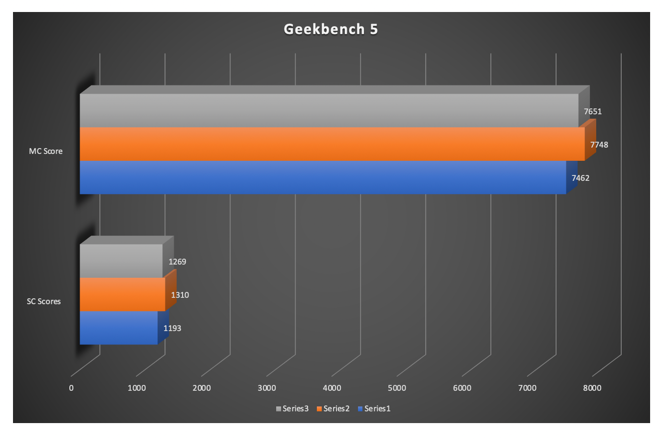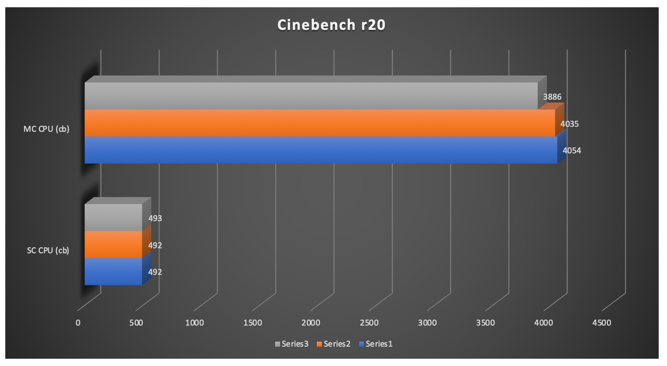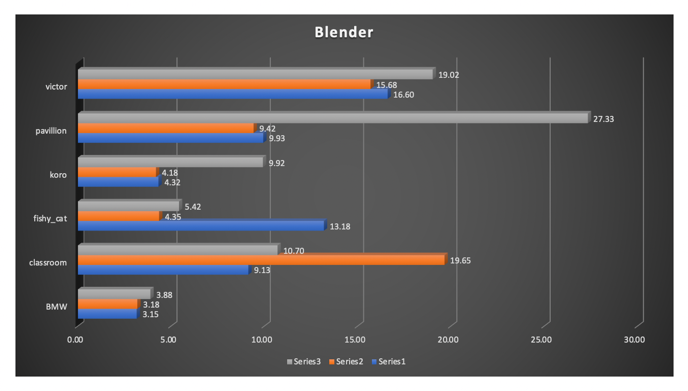
Introduction
I have wondered about this for a while now. Even though I have a spreadsheet of benchmarks from my various Macs and PCs over the years, including where Windows 10 is installed in BootCamp, I have never written about performance differences in each OS. Is macOS a performance deterrent or does Windows just run better on Apple hardware. Watching the videos on the upcoming Apple Silicon Macs has me wondering if I will need a good Windows laptop (in particular) in addition to my MacBook Pro. The short answer is NO. In fact, I believe that once macOS is no longer supported on this MacBook Pro, Windows will still run well on it. I might make it a Windows laptop when I am forced to get an Apple Silicon Mac. Hopefully, that is a couple of years away. I understand the reasons Apple is giving for moving to their own CPU/SoC hardware, but the Intel MacBook Pros are so versatile due to BootCamp. I have little confidence that Microsoft will be absolutely serious about Windows on ARM until Intel or AMD start to move away from x86 architecture.
System Specs:
iMac (2019)
CPU: Intel Core i9-9900k @ 3.6GHz (stock speeds)
GPU: AMD Radeon Pro 580X
Storage: 2TB Apple Fusion Drive/WD USB 2.0 250GB HDD
Memory: 24GB DDR4 RAM @ 2666MHz
Motherboard Chipset: Intel Q370
Software: TG Pro on macOS Big Sur, Macs Fan Control on Windows 10 and macOS Catalina

The Setup… and Yes, I am a Pimp. 🙂
Testing Methodology
I tested under 3 different OSes, each running natively but off of different storage configurations. The storage configuration should not really impact CPU benchmarks, but it is worth noting. macOS 11 [Big Sur] is running purely off of the SSD portion of the Apple Fusion drive. macOS 10.15.7 [Catalina] was running off of an external USB 2.0 HDD. Finally, Windows 10 was running off of the Apple Fusion drive, but on the HDD portion of the Fusion drive. I tested using Cinebench r20 downloaded from Apple and Microsoft app stores, Geekbench 5, and Blender Benchmark using all 6 available tests: BMW, pavilion, KORO, fishy cat, classroom, and victor. All only run once over night. [It didn’t take that long, but watching benchmarks is quite boring.]
For Cinebench, I modified it to run at least 180 seconds so that it would at least get three uninterrupted runs and give me the best score of the three runs. This is not an average but highest score.
I do use fan control software that increases the fan curve to try and keep CPU temps under control. This does not really help the numbers too much because watching Intel Power Gadget, I can see, while the CPU Temps are down, the power consumption is the same so the CPU doesn’t really run any faster, but it runs pretty much the same but a little cooler. Temps stay in the 80’s using the fan control software and 90’s using the stock Apple fan curve. Oh, and the iMac is much louder using the fan control software because it ramps the fan up faster and at full speed. Trade off for lower temps is much more loud machine. Keep that in mind as we look at the numbers.
Legend for the Charts Below
Series 3 – iMac on Windows 10 via BootCamp
Series 2 – iMac on macOS 10.15.7
Series 1 – iMac on macOS 11 Beta 9
The Numbers

Geekbench 5: This shows that Windows runs pretty close in Singe Core (SC) and Multi-Core (MC) numbers. macOS 11 Beta has the worst scores, but it is still in Beta and Geekbench might not be optimized for macOS 11, yet. Even son, the scores are pretty close but are not as high as the average according to the Geekbench Browser. Average SC is 1235 and MC is 8287. That makes my iMac -3%/-10% slower than average on macOS 11; +6%/ -7% on Catalina and +3/-8% on Windows 10. Basically, SC scores are pretty average, but MC scores are well below average.

Cinebench r20: What can I say here? While Cinebench does not have a browser like Geekbench, I know from building Core i9 machines at Fry’s and from number obtained from other reviews that my Cinebench numbers are at least 10% less than what I would consider average. At least, the MC scores. I am not sure what it is, but I think I just lost the “silicon lottery” with my iMac. But the point of this post was to see if OS plays a part in the scores. Of all things, Windows 10 was the slowest and I ran it twice. Usually, I get the best scores under Windows but not this week. SC scores are pretty consistent.

Blender 2.90 Benchmark: This was very interesting that all 3 OSes had anomalies. For Windows, Victor, Pavillion, Koror all were well above their macOS scores. macOS Big Sur struggled with fishy_cat and macOS Cataline struggled with classroom. Not sure if these would be consistent if I had time to re-test each of the anomalies.
Conclusion
It really doesn’t feel that either OS has an advantage. That is pretty apparent in these scores. Anomalies aside, scores were pretty close with each OS winning here and losing there. It is not the feeling that macOS isn’t optimized for this hardware. We know Windows can’t be optimized for any particular hardware since it has to support so much more hardware than Apple does. Apple will even reduce that more as they continue to design their own hardware with less reliance on 3rd party vendors such as AMD and Intel. I am not fully on-board with this because I do have Windows installed in BootCamp on both my iMac and my MacBook Pro 13”. I might do this type of post using my MacBook Pro as well. I’m glad that macOS isn’t preventing this hardware from performing up to it’s potential, something I was quite frankly worried about. Mostly due to driver support. So, that is all for this blog post. I will be back for more interesting Apple/Windows posts.


